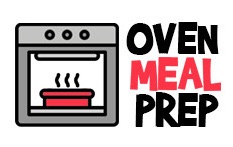From Pyrex to tempered glassware, there are many dishes to roast, bake, and cook in the oven. Glass bakeware are great for serving large crowds and conduct heat well for evenly cooked food.
Some glass containers are capable of freezing, defrosting, and safely reheating without shattering or breaking the glass in the oven when properly thawed.
But regardless of type of glass, it is difficult to identify whether the glass is oven safe or not without a symbol indication on the bottom.
How can you tell if glass is oven safe? Most oven-safe containers include a symbol located on the bottom, however non-tempered glass should never be used in the oven. If there is no symbol, look for tempered or borosilicate glass which also means it is safe for oven use.
Furthermore, look for indications saying what temperature the glass breaks. Pyrex, tempered, and borosilicate glass tend to break at temperatures above 425 degrees Fahrenheit or 218 degrees Celsius.
When in doubt, refer to manufacturer instructions for safely using the glassware in an oven.
Not all glass dishes are made for oven use. Whether glass container is used as a meal prep container or food storage, there are ways to safely use glassware.
Answered below are frequently asked questions about identifying oven-friendly glassware to prevent from shattering. With the right instructions and care, glass is safe to use in the oven and maintain its function and quality overtime.
Can any glass go in the oven?
No, not all glass can go in the oven. It depends on a specific type of glass dish, what the dish is made out of and the temperature breaking point.
Tempered glass is generally safe to use in the oven, where as non-tempered glass is usually not safe to use in the oven. Additionally, borosilicate products are alright to use in the oven as well.
Tempered glass is often labeled with an oven-safe symbol on the bottom of the dish. The symbol is the main way to tell if the glass dish is okay to put in the oven.
Know that glass in general does not handle rapid temperature change very well. If the glassware was in the fridge or freezer, slowly transition it to room temperature before placing it into a hot oven.
Understanding the temperature breaking point for each type of glass will help to prevent from shattering the dish.
Will glass dish break in the oven?
Yes, a glass dish can easily break in the oven. Both tempered or non-tempered glass can break or shatter in the oven due to thermal shock or severe temperature changes.
For instance, taking a glass container from the freezer or refrigerator and place it in a preheated oven will result in quick fluctuation of temperature that can cause the glass to crack or shatter.
Glass is a material that expands and contracts when exposed to continuous stress, in this case is hot and cold. There are unnoticeable micro cracks that overtime can eventually shatter into tiny pieces when exposed to extreme cold or high heat in an oven.
What temperature does glass break in the oven?
Glass is a poor thermal conductor, and rapid changes in temperature create stress that may crack at any time. Avoiding extreme temperature differences is the best way to avoid any breaking.
Most glass begins to break between 302 to 392 degrees Fahrenheit or 150 to 200 degrees Celsius. Depending on the types of glass, the breaking point temperature varies.
- Crystal: 150 to 200 degrees Fahrenheit or 65 to 93 degrees Celsius
- Pyrex: 425 degrees Fahrenheit or 218 degrees Celsius
- Tempered glass: 470 degrees Fahrenheit or 243 degrees Celsius
Always check the glassware instruction manual to better care for the container when using in the oven.
How do I make sure my glass doesn’t break in the oven?
No matter how much precaution is applied to glass dishes, it is sometimes hard to avoid glass breaking in the oven. The temperature setting is one of the most important aspects for an oven-safe container.
Here are thoughtful tips to ensure the glass does not break in the oven:
- Prior to placing glass dish in the oven, preheat the oven to eliminate the thermal shock from direct heating.
- Thaw the dish and let it completely defrost overnight in the fridge.
- Allow refrigerated dishes to come to room temperature before placing in a preheated oven.
- Avoid using the glass dishes under the broiler or on the stovetops.
- Do not drop or knock the glassware around to create tiny cracks.
- Add a little liquid to eliminate empty space of the dish when roasting.
- Put the hot glass dish on a dry cloth potholder instead of cold surface or wet towel.

Oven Safe Glass: Conclusion
Glass dishes make baking, roasting, and cooking in the oven very easy to do. The food delicious and the presentation makes it worthy on serving directly on the table.
The problem faced with using glass baking dishes is the cookware shattering or breaking into tiny pieces. Not only does it create a big mess with no meal to show for it, but breakage is potentially dangerous.
Glassware is not capable of rapid temperature changes from cold to hot, or freezer and fridge to a hot oven. As a result, it can experience thermal shock causing sections of the glassware to expand or contract differently, resulting in a shattering effect.
Check for oven-safe symbols on the bottom of the dish, type of glass, and what temperature the glass breaks so you are able to prevent it from shattering.
There are many types of glass, and not every glass is heat resistant. Select tempered glass or borosilicate products for oven safety.
Use above tips and tricks to avoid glass breaking in the oven. When uncertain, refer to the owners manual and always apply the proper care instructions as recommended.
